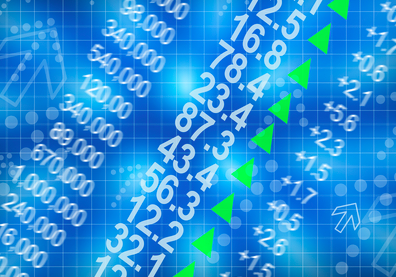Wealth Strategies
Looking Ahead: COVID-19 Creates New Economic Priorities, Investment Ideas - Sarasin & Partners

The chief investment officer of the wealth management house considers what the likely economic trajectory of the world will be this year and what sectors will win and lose from the impact of the virus.
The coronavirus pandemic has hammered global markets and is
also forcing thinking on how the financial services industry will
have to change in future, adjusting to different ways of
working.
A range of sectors have been hit hard, such as hotels and
cruises. On the other hand, digital tools allowing two-way video
and remote working are benefitting. Recent enthusiasms, such as
for environmental, social and governance-themed investment
might appear less urgent if the problem is one of huge disruption
to supply chains and ways of working. Arguably, however, changes
to supply chains, tighter health controls and more transparency
around business practices are made even more relevant by
coronavirus.
We are running some commentaries on the virus from investment
firms, with a view to charting out the trends that are likely to
take hold in the months ahead. Here are thoughts from Guy Monson,
chief investment officer at Sarasin &
Partners, the UK-based wealth management house.
The peak of the US stock market was as recent as 19 February. The
average time to enter a bear market is 136 days. This time, it
took little more than 20 trading days. For investors, the speed
of decline is particularly disorientating.
However, three things are worth remembering. First, the 27 per
cent fall from peak for the world equity index probably discounts
much of the damage and the impact will ultimately be temporary.
Second, the government and central bank response will be massive.
The fiscal response could be very large, with Chancellor Sunak’s
aggressive and confident UK budget potentially becoming something
of a global template. Finally, central banks and regulators
learned a great deal from the last crisis about the value of
liquidity and business continuity and we expect very proactive
measures to support the financial system.
Looking forward, the COVID-19 crisis will surely leave
longer-term scars on the world economy and we must expect, at
best, an L-shaped recovery across many regions. The damage in
Europe will be concentrated in the service sectors - tourism,
accommodation, travel and retail - where output is not easily
recovered. Attitudes to social distancing will also take time to
reverse and it is very difficult to anticipate how long it will
take for consumer behaviour to normalise.
However, these behavioural changes also promise exciting new
priorities for the global economy - more home working, greater
awareness of biodiversity, support for truly universal healthcare
and a massive drive for digital and cloud-based business models.
These are all welcome and thoroughly investable outcomes.
Massive fiscal programmes will also transform public services and
infrastructure, while much of the implementation will occur in
the long-term framework of a carbon-neutral global economy. For
investors, these opportunities offer a promise of sustainable
profitability and dividend growth that will underpin portfolios
in 2021 and beyond, against a backdrop where much of the economic
damage expected over the next 12 months is already reflected in
this month’s sharp equity market declines.
Opportune entry point
The global economy is temporarily powering down, as COVID-19
containment measures restrict activity and curtail demand across
an increasing portion of the globe. The impact is synchronised
and transmitted as both a demand and supply shock. In the former,
demand falls sharply, as consumers and businesses worldwide defer
consumption, travel and capital expenditure. In the latter,
supply contracts, as capacity is shuttered, labour restricted and
supply chains disrupted as part of the “containment phase” of the
crisis.
Our base case is for global growth to fall to zero in 2020,
driven by sharp contractions in Q1 and Q2 followed by only a
modest recovery in the second half of the year. We do not expect
a V-shaped recovery in the second half. Instead, the global
economy will experience a permanent loss, as services not
consumed in the first half of the year will be lost - café goers
will not drink twice the amount of coffee next month. We also
expect a weak form of “social distancing” to continue in the
second half of the year as a result of “scarring” from the health
crisis.
Finally, there will be a fear of a cash flow and liquidity
squeeze as business contracts, suppliers go unpaid, and lay-offs
grow. In this respect, it is unhelpful that the collapse in world
oil prices has been greatly exacerbated by a supply war between
two of the largest producers - Saudi Arabia and Russia. This adds
further stress to credit markets, where the high leverage of the
US shale producers is particularly vulnerable. At present, credit
spreads have widened but are not yet approaching the levels we
saw in 2008-2009. We expect policymakers and central banks to
focus on limiting spread widening in core markets and initiate
targeted lending programmes of the sort Germany has just
announced, which focus on the cash flow squeeze for small and
medium-sized businesses.
The suddenness in price moves can be explained in part by the
sharp realisation of how dire the impact of containment
strategies will be on global GDP. Therefore, markets may already
have discounted much of the likely impact of the downturn. While
we are not calling a market bottom, today’s valuations for
high-quality, liquid and broadly thematic stocks incorporate a
lot of bad news.
If we are right and we ultimately rebuild a new, more robust
world with better global healthcare and sustainable
infrastructure, with government bonds around the world yielding
less than 1 per cent, investors can afford to wait for the equity
of companies central to achieving this vision.